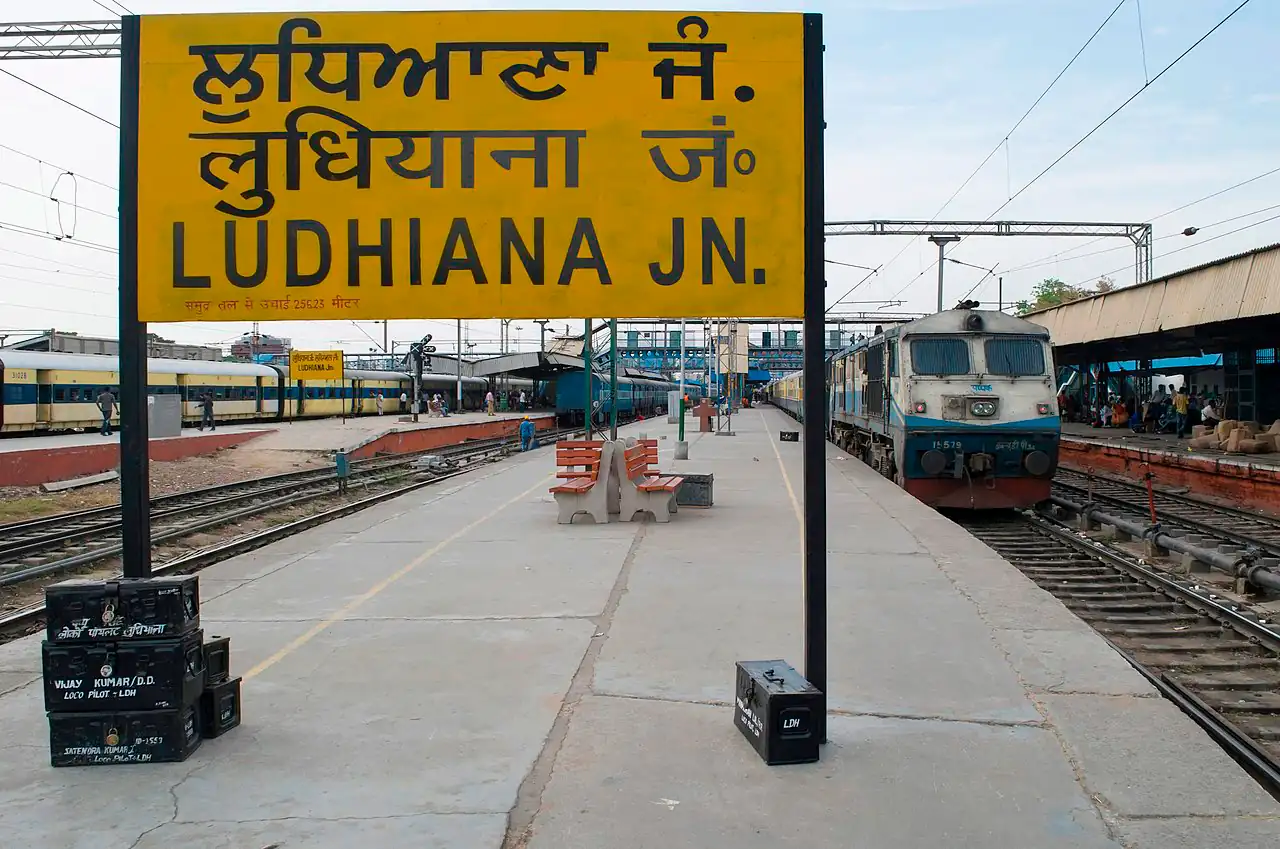“Ready to experience Ludhiana’s dynamic blend of tradition and modernity? Plan your trip today and uncover the soul of Punjab!”
🔴 Introduction: Ludhiana – Where Industry Meets Heritage
“From Looms to Legends: Ludhiana Weaves Stories of Grit and Glory”
Nestled on the banks of the Sutlej River, Ludhiana isn’t just Punjab’s most populous city—it’s a pulsating hub where history, industry, and culture converge. With a population of 1.6 million (2011 census), this “Manchester of India” thrives as a textile and manufacturing giant while preserving centuries-old landmarks like the Lodhi Fort. But Ludhiana is more than factories: its bustling markets, spirited festivals like the Kila Raipur Rural Olympics, and warm Punjabi hospitality make it a must-visit destination.
In this guide, we’ll unravel Ludhiana’s layered identity—exploring its Mughal-era roots, architectural gems, and modern-day innovations. Whether you’re a history buff, a foodie craving Makki di Roti, or a traveler seeking offbeat adventures, Ludhiana promises surprises at every corner.
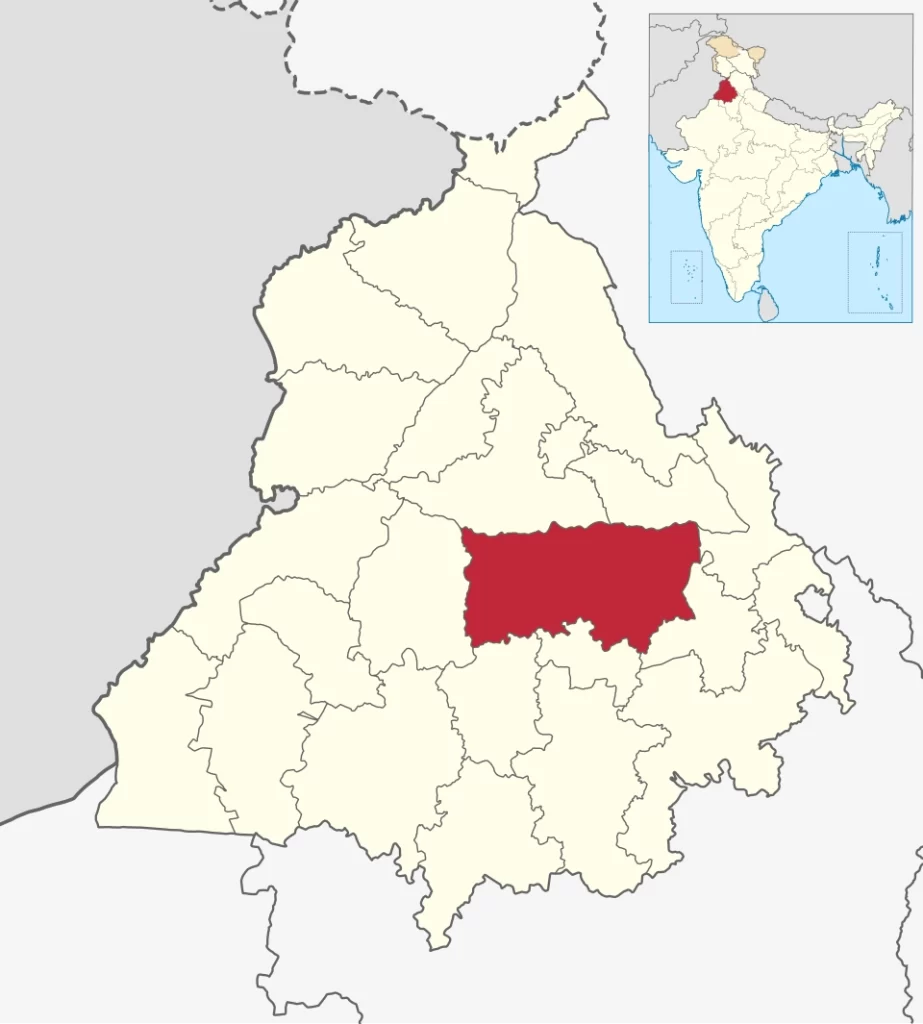
Comprehensive Guide to Ludhiana, Punjab, India
🟢 Detailed Introduction to Ludhiana
➨ Historical Legacy: Ludhiana, Punjab’s largest city, traces its origins to 1480 CE when it was founded by Nihang Khan of the Lodi dynasty as a strategic military outpost named Lodi-ana. The iconic Lodhi Fort, now in ruins, stands as a testament to its medieval past, though it was later revitalised under Maharaja Ranjit Singh and the British. The city’s history intertwines Sikh valour, Mughal influence, and colonial-era developments, including its role as a British cantonment post-1809.
➨ Geographical Significance: Situated at 30.91°N, 75.85°E, Ludhiana lies on the Sutlej River’s former bank, now 13 km south of its current course. With an elevation of 244 meters, it spans 159.37 km² and is Punjab’s most densely populated urban centre (1.6 million residents as of 2011).
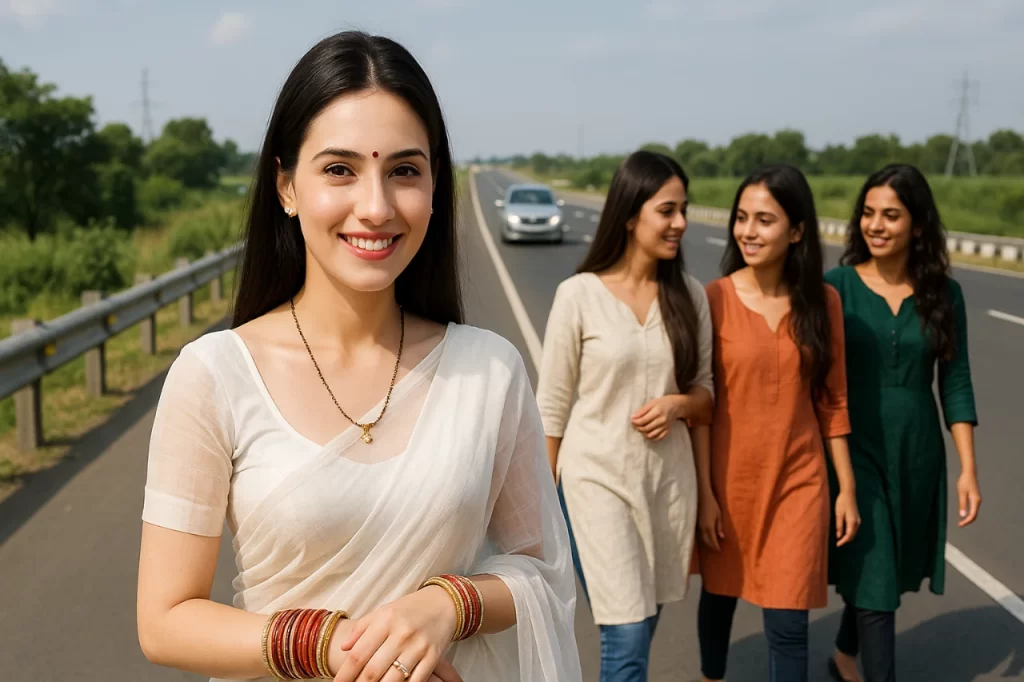
➨ Economic Powerhouse: Dubbed “India’s Manchester”, Ludhiana contributes over 50% of India’s bicycle production and 60% of tractor parts. Its hosiery industry, producing 90% of India’s woollen garments, fuels exports to 50+ countries. Recent initiatives like Punjab’s Right to Business Act (2020) have streamlined approvals for 67 new industrial units, boosting employment and infrastructure.
➨ Cultural Melting Pot: A blend of Punjabi traditions and modernity, Ludhiana hosts festivals like the Kila Raipur Rural Olympics, featuring bullock cart races and Gatka (Sikh Martial Arts). The city’s cuisine reflects its agrarian roots, with dishes like Makki di Roti and Sarson da Saag dominating local menus.

➨ Urban Challenges: Rapid industrialisation has led to severe air and water pollution, with Ludhiana ranking 13th globally for worst air quality. The Budha Dariya river remains a toxic byproduct of unchecked industrial waste.
➨ Educational Hub: Home to Punjab Agricultural University (Asia’s largest agricultural institute) and Christian Medical College (Asia’s first medical school for women), Ludhiana blends academia with innovation.
Also Read
Sajjangad Fort, Maharashtra – A Spiritual and Historical Odyssey
➨ Connectivity: Ludhiana Junction railway station links it to major cities like Delhi and Mumbai, while Sahnewal Airport offers domestic flights. The upcoming Halwara International Airport aims to enhance global connectivity.
➨ Modern Development: The Punjab government’s 24,311-acre land acquisition plan seeks to transform Ludhiana into a model of planned urbanisation, addressing chaotic sprawl and infrastructure gaps.
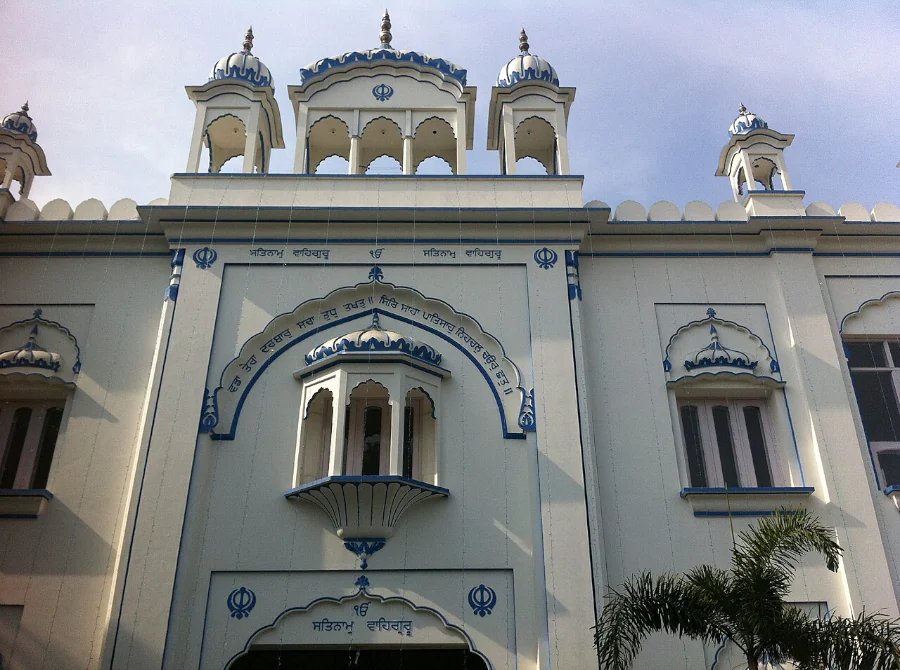
Ludhiana: Industrial Hub with Heritage Charm
🟣 Section-by-Section Breakdown
➸ History & Architecture: From Lodhi Dynasty forts to British-era colleges.
➸ Geography & Climate: Monsoon patterns, pollution challenges, and seasonal travel tips.
➸ Economy & Industry: Bicycle factories, hosiery hubs, and Punjab’s entrepreneurial spirit.
➸ Culture & Lifestyle: Festivals, local cuisine, and Punjabi folk traditions.
➸ Travel Essentials: How to reach, top attractions, and itineraries.
➸ FAQs: Quick answers for first-time visitors.

🟠 Detailed Section-by-Section Breakdown
🔘 History & Architecture: Echoes of Empires
➤ Granular Timeline:
➸ 1480 CE: Founded by Nihand Khan of the Lodhi Dynasty, Ludhiana (originally Lodhi-ana) began as a strategic outpost.
➸ 1760 CE: Captured by Sikh chieftains, later becoming a British cantonment post-Anglo-Sikh Wars.
➸ 2013: Lodhi Fort declared a protected monument after decades of neglect.
➤ Architectural Highlights:
➸ Lodhi Fort (Purana Qila): The lone survivor of the Lodhi era, this fort once guarded the Sutlej’s banks. Today, it houses the College of Textile Engineering — a blend of medieval and modern.
➸ Clock Tower & Daresi Grounds: Colonial-era landmarks in the Old City, where locals gather for evening Chaat and Gossip.
➸ Sood Family Haveli: A 19th-century mansion showcasing intricate woodwork, reflecting the wealth of Ludhiana’s merchant class.
➸ Local Insight: “The fort’s tunnel to Phillaur? Maybe a myth, but it keeps our kids curious!” – Rajesh, Ludhiana tour guide.

🔘 Detailed History & Architecture (with Granular Details)
Ludhiana, Punjab’s industrial powerhouse, is a living chronicle of North India’s layered past, where the footprints of empires—from the Delhi Sultanate to the British Raj—are etched into its architecture and urban fabric. Below is a granular exploration of its Historical and Architectural legacy, spanning 8–10 paragraphs.
➤ Lodhi Dynasty: The Birth of Ludhiana (15th–16th Century)
Ludhiana’s origins trace to 1480 CE, when Nihand Khan of the Lodi dynasty established the city as Lodi-ana (“Lodi’s Town”) on the banks of the Sutlej River. The strategic fortification, Purana Qila (Lodhi Fort), was constructed during this period to guard against regional rivals.
Built with thick mud-brick walls and bastions, the fort’s design reflected early Indo-Islamic military architecture, incorporating features like arched gateways and underground tunnels—one of which legend claims connected it to Phillaur Fort across the Sutlej. Though now in ruins, the fort’s remnants, including its weathered ramparts, were declared a state-protected monument in 2013, preserving its role as Ludhiana’s oldest surviving structure.
➤ Mughal Influence & the Rise of Sikh Architecture (16th–18th Century)
The Mughal era saw Ludhiana transition into a regional administrative hub. While direct Mughal architectural imprints are sparse, the Payal Fort (1771 CE), commissioned by Maharaja Amar Singh of Patiala with Mughal aid, exemplifies syncretic design. It’s fortified walls, arched entryways, and strategic positioning mirrored Mughal military aesthetics, while later Sikh additions included ornate frescoes and communal spaces.
The Sikh Confederacy (18th century) further enriched the region’s architecture, blending Mughal grandeur with indigenous motifs. Gurdwara Charan Kanwal in Machhiwara, for instance, showcases this fusion: its domed sanctum and intricate Jali (Lattice) work reflect Mughal influences, while the use of local materials like brick and lime mortar rooted it in Punjabi traditions.
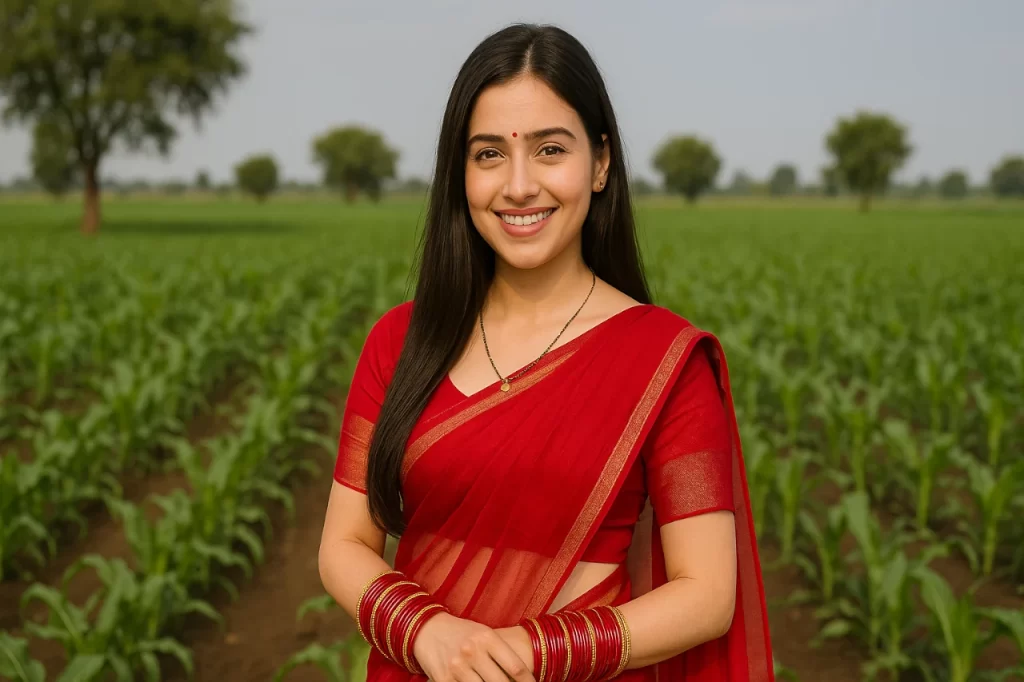
➤ Colonial Transformations (19th–20th Century)
British colonisation reshaped Ludhiana’s urban landscape. The Clock Tower (1885), a neo-Gothic marvel in the Old City, became a symbol of colonial authority with its towering spire and clock faces imported from England.
The Civil Lines area, developed as the British administrative quarter, introduced Victorian-style bungalows with verandas, sloping roofs, and manicured gardens—a stark contrast to the congested Old City. Meanwhile, Phillaur Fort transitioned from a Mughal stronghold to a British cantonment, its hybrid architecture featuring Mughal-era bastions alongside colonial barracks and parade grounds.
➤ Sikh Architectural Legacy
Sikh rule under Maharaja Ranjit Singh (early 19th century) left enduring spiritual landmarks. Gurdwara Dukh Niwaran Sahib, built in 1783, epitomises Sikh sacred architecture. Its gold-plated dome, marble Sarovar (Holy Pool), and frescoes depicting Guru Nanak’s life harmonise spiritual function with artistic grandeur.
Similarly, Gurdwara Mehdiana Sahib (19th century) is renowned for its life-sized dioramas of Sikh martyrs, blending narrative art with religious symbolism. These structures often featured Chhatris (Domed Pavilions) and expansive courtyards, fostering community gatherings—a hallmark of Sikh architectural philosophy.

➤ Vernacular Architecture: Punjabi Havelis & Courtyard Homes
Pre-colonial Ludhiana’s residential architecture centered on Havelis and courtyard homes. Traditional Kothis (Mansions), like the Sood Family Haveli, showcased lime-plastered walls, carved wooden doors, and enclosed courtyards (Aangan) designed for ventilation and social cohesion.
Jharokhas (overhanging balconies) with floral motifs and shaded Chajjas (Eaves) protected interiors from Punjab’s harsh sun. Materials like surkhi (crushed brick mortar) and Kikar wood were locally sourced, reflecting sustainable practices now lost to modern construction.
➤ Industrialisation & Urban Sprawl (Post-1947)
Post-independence, Ludhiana’s identity as “India’s Manchester” spurred utilitarian architecture. Factories with corrugated iron roofs and brick chimneys dominated the skyline, while worker colonies adopted minimalist, grid-based layouts. The College of Textile Engineering, housed within the Lodhi Fort complex, symbolises this shift—its Soviet-inspired concrete blocks juxtaposed against the fort’s ancient walls. Rapid urbanisation, however, led to the demolition of heritage structures like the Daresi Grounds Havelis, replaced by commercial complexes.

➤ Preservation Challenges & Modern Interventions
Many of Ludhiana’s historical sites face neglect. The Payal Fort, despite its ASI-protected status, remains locked and overgrown, its Mughal-era frescoes crumbling. Similarly, the Lodhi Fort suffers from encroachment and water damage, though recent state initiatives aim to restore its ramparts. Contrastingly, the Maharaja Ranjit Singh War Museum (2003) represents modern heritage curation, using multimedia exhibits to narrate Punjab’s martial history within a contemporary glass-and-steel structure.
➤ Cultural Synthesis in Contemporary Architecture
Today, Ludhiana’s architecture mirrors its cosmopolitan ethos. The Hyatt Regency blends Punjab’s agrarian motifs—terra-cotta tiles, wheat stalk patterns—with sleek minimalism. Meanwhile, the Punjab Agricultural University Museum revives vernacular elements, featuring mud-plastered walls and thatched roofs to showcase rural life. Even in urban sprawl, echoes of empires endure—a testament to Ludhiana’s resilience as a cultural palimpsest.
This deep dive into Ludhiana’s architectural journey reveals a city where every brick tells a story—of conquest, faith, and reinvention. From Lodhi battlements to Sikh sanctums and colonial clock towers, Ludhiana remains a living museum of India’s pluralistic heritage, urging both preservation and innovation.

🔘 Geography & Climate
➤ Location: 30.91°N, 75.85°E | Elevation: 244 meters.
➤ Seasons:
☀️ Summer (April–July): Scorching (up to 104°F), dry winds. Avoid afternoon outdoor activities.
🌧️ Monsoon (July–September): 80% of annual rainfall (809 mm). Budha Dariya river pollution spikes during floods.
☁️ Winter (December–February): Cool (43°F – 72°F), ideal for exploring.
➸ Pollution Alert: Ranked 13th most polluted city globally—pack masks, especially near industrial zones.

🔘 Economy & Industry: Punjab’s Powerhouse
⦿ Bicycles: 50% of India’s production. Brands like Hero Cycles and Avon dominate.
⦿ Textiles: 60% of India’s Woolen Garments. Visit Sarabha Nagar Market for hosiery shopping.
⦿ Agriculture: Home to Punjab Agricultural University, pioneering Green Revolution tech.
➸ Local Entrepreneur Quote: “My grandfather started with a sewing machine; now we export to Germany!” – Harpreet, factory owner.
🔘 Culture & Lifestyle
➤ Festivals:
⦿ Kila Raipur Rural Olympics: Bullock cart races, Gatka (Sikh Martial Arts), and tractor pulls.
⦿ Lohri: Bonfires and Gur Rewri sweets mark Punjab’s Harvest festival.
➤ Food:
⦿ Amrik Sukhdev Dhaba: Buttery parathas and lassi on NH44.
⦿ Chaat at Ghumar Mandi: Tangy Aloo Tikki and Pani Puri.
➤ Handicrafts:
⦿ Phulkari embroidery shawls from Gill Road markets.
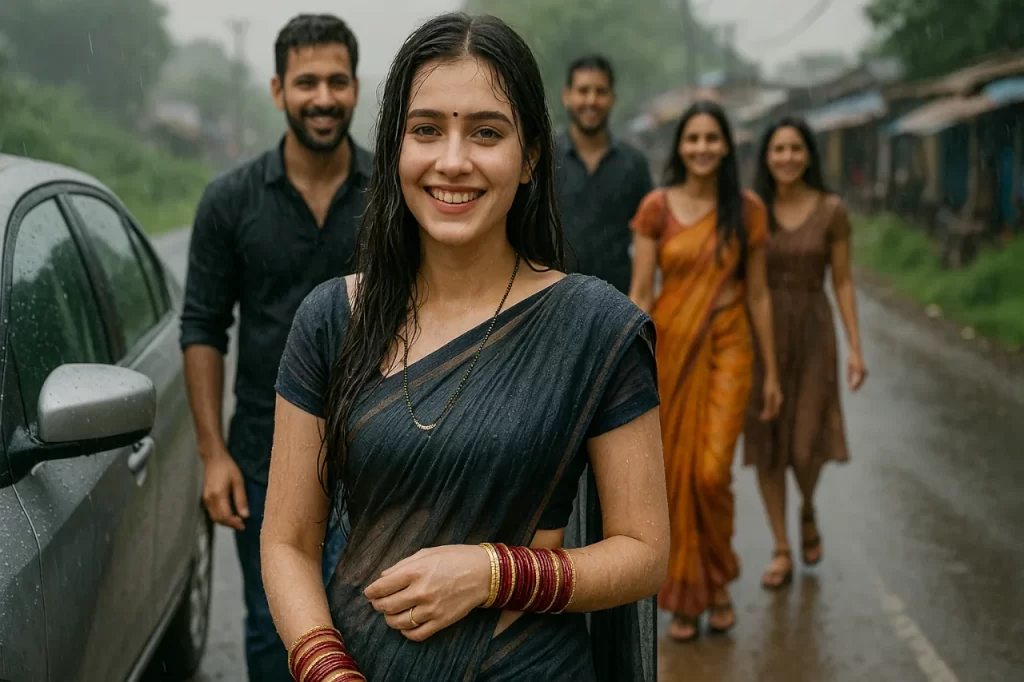
🔘 Travel Essentials
➤ How to Reach:
⦿ Air: Sahnewal Airport (Domestic), Chandigarh (International, 110 km).
⦿ Rail: Ludhiana Junction—connects Delhi, Mumbai, Kolkata.
⦿ Road: NH44 links to Delhi (310 km), Amritsar (140 km).
➤ Top Attractions:
➸ Rakh Bagh Park: Colonial-era gardens with rose displays.
➸ Punjab Agricultural University Museum: Chronicles farming history.
➸ Guru Nanak Stadium: Kabaddi matches and sports festivals.
➤ Best Time to Visit:
➸ October–March (Cool, 55°F – 75°F ie. 12.8°C – 23.9°C respectively).

🔘 Notable People and Their Work
➸ Sunil Mittal (Airtel Founder): Founder of Bharti Airtel, born in Ludhiana.
➸ Dharmendra (Bollywood Star): Bollywood Icon with roots in Ludhiana’s villages named ‘Sahnewal’.
➸ Heena Sidhu (Olympic Shooter): Olympic shooter trained at local ranges.
➸ Lala Rattan Chand Oswal: Founder of Vardhman Textiles, revolutionising Punjab’s textile sector.
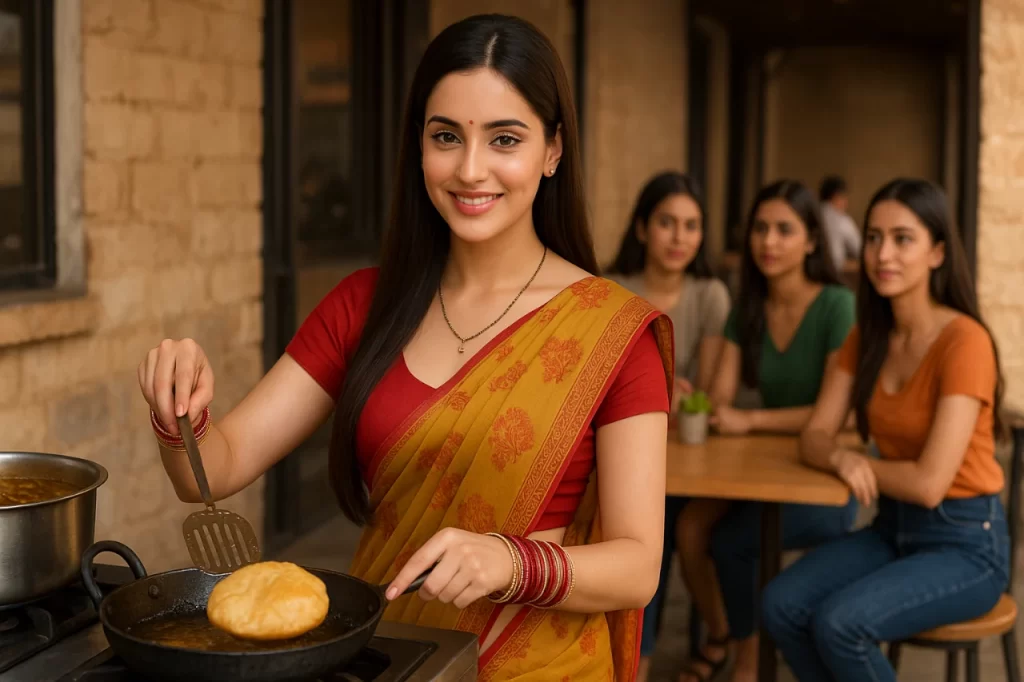
🔘 Best Places for Refreshments with Authentic Local Food
➤ Baba Chicken:
⦿ Specialties: Butter Chicken, Tandoori Chicken, and masala fries.
⦿ Location: Shastri Nagar, Model Town.
⦿ Ambience: Bustling, with queues during peak hours. Mixed reviews highlight overpriced items but praise the gravy’s unique flavour.
➤ Indian Summer:
⦿ Specialties: Murg Masala (Melt-in-mouth Chicken), Pineapple Raita.
⦿ Location: Bhai Randhir Singh Nagar.
⦿ Ambience: Family-friendly with live music. Mains are praised, though starters are criticised for small portions.
➤ Amrik Sukhdev Dhaba:
⦿ Specialties: Buttery parathas and lassi.
⦿ Location: NH44.
⦿ Highlights: A highway staple for truckers and tourists, offering hearty Punjabi meals.
➤ Ghumman Di Hatti:
⦿ Specialties: Chole Bhature, Dal Makhani.
⦿ Location: Ghumar Mandi.
⦿ Budget-Friendly: ₹100–200 per plate.
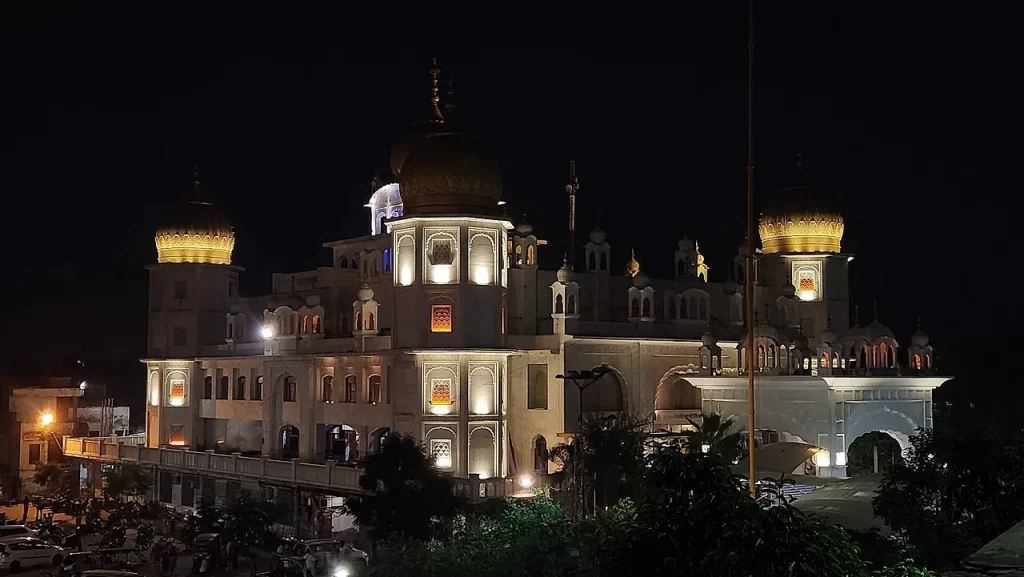
🔘 Best Places to Visit in Ludhiana: A Granular Guide
Ludhiana, Punjab’s Industrial Powerhouse, Seamlessly Blends History, Spirituality, and Modernity. Below is a detailed breakdown of its top attractions, enriched with cultural insights and practical tips for travellers.
➤ Lodhi Fort (Purana Qila)
➸ Historical Significance: Built in 1480 CE by Sikandar Lodi of the Delhi Sultanate, this 500-year-old fort stands as a testament to Ludhiana’s medieval past. Once a strategic military outpost on the Sutlej River’s banks, it now lies in partial ruins but retains its grandeur with remnants of arched gateways and bastions.
➸ Highlights: The fort houses the College of Textile Engineering, merging ancient architecture with modern academia. Legends of a secret tunnel connecting it to Phillaur Fort add intrigue, though its authenticity remains debated.
➸ Visitor Tip: Visit during sunset for photography, and explore the adjacent Sutlej riverbank for serene views.
➤ Phillaur Fort
➸ Architectural Marvel: Designed in the 18th century by Dewan Mokham Chand, Maharaja Ranjit Singh’s general, this fort combines Mughal and European styles. It later served as a British cantonment and now hosts the Punjab Police Academy.
➸ Features: Explore its courtyards, barracks, and the on-site museum showcasing Sikh military artefacts. The fort’s strategic location on the Grand Trunk Road makes it easily accessible.
➤ Gurudwara Charankanwal Sahib (Machhiwara)
➸ Spiritual Hub: Located 35 km from Ludhiana, this gurdwara commemorates Guru Gobind Singh’s 1705 retreat during the Mughal siege. The site features a sacred well where the Guru drank water and a serene sarovar (holy pool).
➸ Annual Fair: Held in December, the fair attracts thousands for Kirtan (Devotional Songs) and Langar (Community Meals).
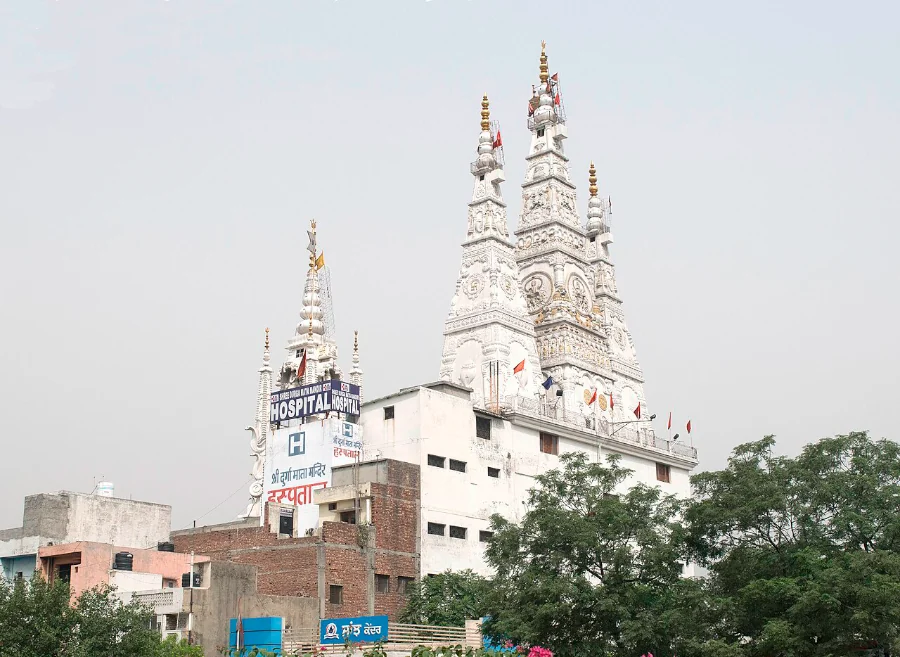
➤ Maharaja Ranjit Singh War Museum
➸ Patriotic Journey: Dedicated to Punjab’s military history, this museum spans 12 galleries, including exhibits on the Kargil War, Sikh Empire weaponry, and a sound-and-light show narrating India’s battles.
➸ Key Artefacts: Rare uniforms, medals, and a replica of the Golden Temple’s Akal Takht.
➸ Timings: Open 9 AM – 5 PM; Entry fee ₹20 for adults.
➤ Rakh Bagh Park
➸ Urban Oasis: A colonial-era garden with a toy train, jogging tracks, and rose beds. The park’s centrepiece is a musical fountain that illuminates at night.
➸ Family-Friendly: Ideal for picnics, with shaded benches and a playground. Located near the Clock Tower, it’s a respite from Ludhiana’s bustling markets.
➤ Hardy’s World Amusement Park
➸ Adventure Zone: Punjab’s largest water park features 20+ rides, including Asia’s first uphill water coaster and an indoor snow park with ice skating.
➸ Highlights: Wave pools, pendulum rides, and a food court serving Punjabi snacks.
➸ Opens at: 10:30 AM – 8 PM; Tickets start at ₹800.
➤ Punjab Agricultural University (PAU) Museum
➸ Agrarian Legacy: This open-air museum displays traditional farming tools, Harappan-era artefacts, and dioramas of rural Punjabi life. The campus’s lush fields and rose gardens are equally captivating.
➸ Must-See: The “Green Revolution” exhibit, highlighting Punjab’s role in India’s agricultural boom.
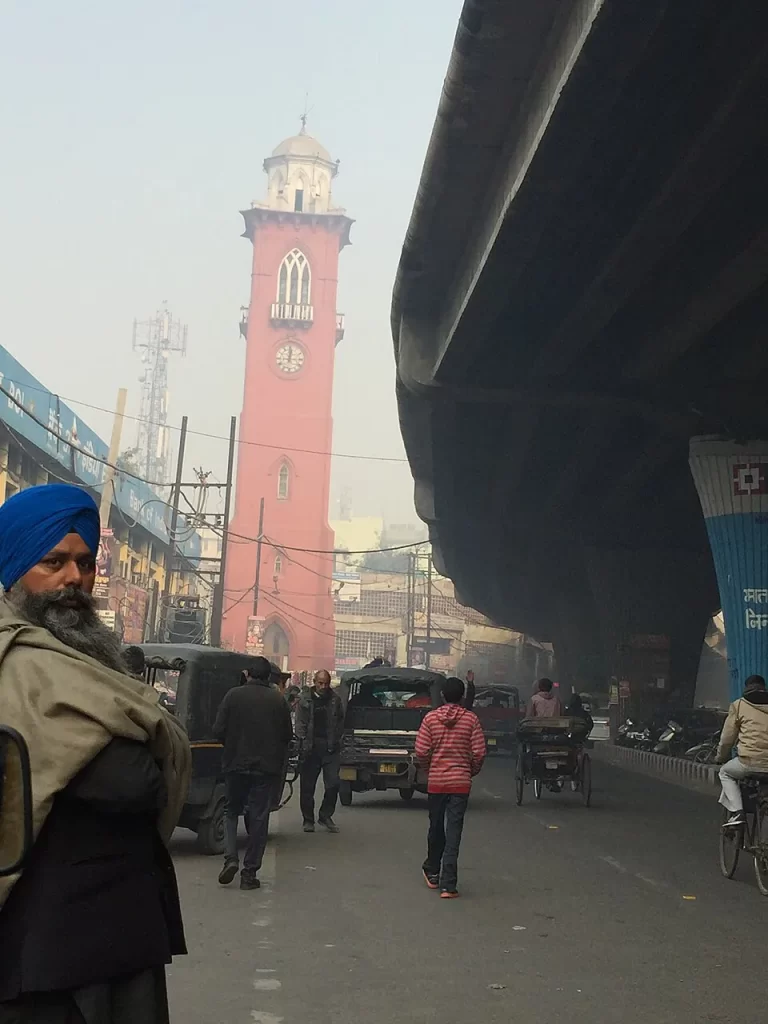
➤ Nehru Rose Garden
➸ Floral Extravaganza: Spread over 27 acres, this garden boasts 17,000 Plants and 1,600 rose varieties, including rare hybrids. The annual Rose Festival in February draws horticulture enthusiasts.
➸ Amenities: Walking trails, fountains, and a café. Free entry from sunrise to sunset.
➤ Deer Park
➸ Wildlife Retreat: Home to Chinkaras, Blackbucks, and Migratory Birds, this park offers guided safaris and picnic spots. The adjacent Tiger Safari features Bengal tigers and leopards in semi-natural habitats.
➸ Location: Neelon Road, 10 km from the city centre. Ideal for morning visits to avoid crowds.
➤ Pavilion Mall & Local Bazaars
➸ Retail Therapy: Pavilion Mall, with 100+ stores, a multiplex, and food courts, epitomises Ludhiana’s modernity. For traditional shopping, Chaura Bazaar and Ghumar Mandi offer Phulkari embroidery, Punjabi Juttis, and spices.
➸ Pro Tip: Bargain aggressively in local markets—prices can drop by 30–50%.
➤ Nearby Excursions
⦿ Amritsar (140 km): Visit the Golden Temple and Jallianwala Bagh.
⦿ Chandigarh (106 km): Explore Le Corbusier’s Rock Garden and Sukhna Lake.
⦿ Kila Raipur (27 km): Attend the Rural Olympics in February, featuring bullock cart races and kabaddi.

🔘 Where to Stay in Ludhiana: A Comprehensive Guide
Ludhiana offers a diverse range of accommodations, from luxury hotels to budget-friendly guesthouses, catering to business travellers, families, and cultural explorers. Below is a detailed breakdown of lodging options, including amenities, pricing, and strategic locations, to help you choose the perfect stay.
➤ Luxury Hotels: Indulge in Opulence
🏛️ Hyatt Regency Ludhiana
➸ Rates: ₹8,000 – ₹15,000/night.
➸ Amenities: Rooftop pool, 24-hour gym, multiple dining options (Indian and international cuisines), spa, and free valet parking.
➸ Location: Ferozepur Road, near MBD Neopolis Mall.
➸ Highlights: Guests praise the “Exceptional Dining” and proximity to shopping hubs. Check-in at 2:00 PM.
🏛️ Radisson Blu Hotel MBD Ludhiana
➸ Rates: ₹7,500 – ₹12,000/night.
➸ Amenities: Full-service spa, four restaurants (including a rooftop bar), children’s pool, and airport shuttle.
➸ Location: Adjacent to MBD Neopolis Mall.
➸ Special Offers: Complimentary ₹500 food credit and 15% off F&B services.

🏛️ Park Plaza Ludhiana
➸ Rates: ₹9,000 – ₹10,700/night.
➸ Amenities: Six hot tubs, outdoor pool, Ayurvedic spa, and free train station pickup.
➸ Location: 1.3 km from Ludhiana Junction.
➤ Mid-Range Hotels: Comfort Meets Affordability
🏛️ Keys Select by Lemon Tree Hotels
➸ Rates: ₹2,600 – ₹3,500/night.
➸ Amenities: Gym, restaurant, and 10% discount on F&B.
➸ Location: Rajguru Nagar, away from city noise.
➸ Guest Review: “Peaceful location with courteous staff”.
🏛️ Hotel Friends Regency
➸ Rates: ₹2,499 – ₹4,999/night.
➸ Amenities: Rooftop restaurant, bar, and proximity to Clock Tower and Lodhi Fort.
➸ Location: Ferozepur Road, 7 minutes from Feroze Gandhi Market.
🏛️ Regenta Central Klassik
➸ Rates: ₹5,800 – ₹6,400/night.
➸ Amenities: Pool-view rooms, conference facilities, and 10% F&B discounts.
➸ Location: Opposite Model Town, ideal for business travellers.

➤ Budget Hotels & Guesthouses: Economical Yet Comfortable
🏛️ FabHotel Nanda
➸ Rates: ₹1,500 – ₹2,200/night.
➸ Amenities: Free WiFi, 24-hour front desk, and proximity to Ludhiana Junction.
➸ Location: Near Clock Tower, Railway Station Road.
🏛️ Hotel City Lite
➸ Rates: ₹1,500 – ₹1,900/night.
➸ Amenities: Spacious rooms, easy access to eateries.
➸ Location: Field Gunj, 980 meters from the railway station.
🏛️ Hotel ATITHI
➸ Rates: ₹1,300 – ₹1,900/night.
➸ Amenities: Central location, clean rooms, and friendly staff.
➸ Location: Old Ludhiana, near the railway station.
➤ Dharamshalas & Spiritual Stays
🏛️ Gurudwara Shri Manji Sahib
➸ Amenities: Free accommodation with community kitchen (Langar).
➸ Location: Near major Sikh shrines.
➸ Note: Ideal for pilgrims; no advance booking required.
🏛️ Gurudwara Dukh Niwaran Sahib Guesthouse
➸ Amenities: Simple rooms, spiritual ambiance.
➸ Location: Karimpura, 8 minutes from the Gurdwara.

➤ Business-Friendly Hotels
🏛️ Hyatt Regency Ludhiana
➸ Facilities: 24-hour business centre, conference halls, and high-speed WiFi.
➸ Proximity: 4.5 km from Ludhiana Stock Exchange.
🏛️ The Stories Hotel
➸ Rates: ₹2,760 – ₹7,440/night.
➸ Facilities: On-site restaurant, conference rooms, and central location in Pavilion Mall.
➤ Family-Friendly Stays
🏛️ Nirvana Luxury Hotel
➸ Rates: ₹4,793 – ₹8,500/night.
➸ Amenities: Outdoor pool, kids’ club, playground, and babysitting services.
➸ Location: Ayali Khurd, 10.5 km from the city centre.
🏛️ Radisson Blu Hotel
➸ Family Perks: Children’s pool, themed dining options, and family suites.
➤ Heritage & Colonial-Era Stays
🏛️ Hotel The Retro Regency
➸ Rates: ₹1,600 – ₹2,200/night.
➸ Ambiance: Blend of vintage decor and modern amenities.
➸ Location: Karimpura, near Jama Masjid.
🏛️ Civil Lines Bungalows
➸ Features: Victorian-style Architecture, Verandas and Gardens.
➸ Example: Super Collection O City Centre (formerly MMC Inn).

➤ Proximity to Key Attractions
➸ Near Rakh Bagh Park: OYO 2120 Hotel Silver Haze (5-minute walk).
➸ Near Punjab Agricultural University: Hyatt Regency (3.5 km).
➸ Near Maharaja Ranjit Singh War Museum: City Heart Sarovar Portico (5 km).
➤ Travel Tips
➸ Book Early: Rates spike during festivals like Lohri (January) and the Kila Raipur Rural Olympics (February).
➸ Discounts: Use codes like “TRIPBACKHOME” on MakeMyTrip for up to 40% off.
➸ Transport: Opt for hotels with free shuttles (e.g., Hyatt Regency, Radisson Blu) if arriving via Chandigarh Airport.
From luxury suites with rooftop pools to budget-friendly havens near bustling markets, Ludhiana’s accommodations ensure a tailored experience for every traveler. Prioritise location based on your itinerary—proximity to industrial hubs, heritage sites, or green spaces—to make the most of your stay.
Note: Hotel rates are subject to change and may vary based on factors like seasonality, availability, and promotions. Taxes, service charges, and other applicable fees are not always included in displayed rates.
📊 Demographics
⦿ Population: 1.6 million (2011), with seasonal migrant labourers from Uttar Pradesh and Bihar.
⦿ Religion: 66% Hindu, 29% Sikh, 2.8% Muslim.
⦿ Languages: 67% Punjabi, 29% Hindi.
🌤️ Climatic Conditions
☀️ Summer (April–July): Scorching (up to 48°C), dry winds.
🌧️ Monsoon (July–September): 809 mm rainfall, frequent floods in Budha Dariya.
☁️ Winter (December–February): Cool (4°C – 22°C), ideal for tourism.
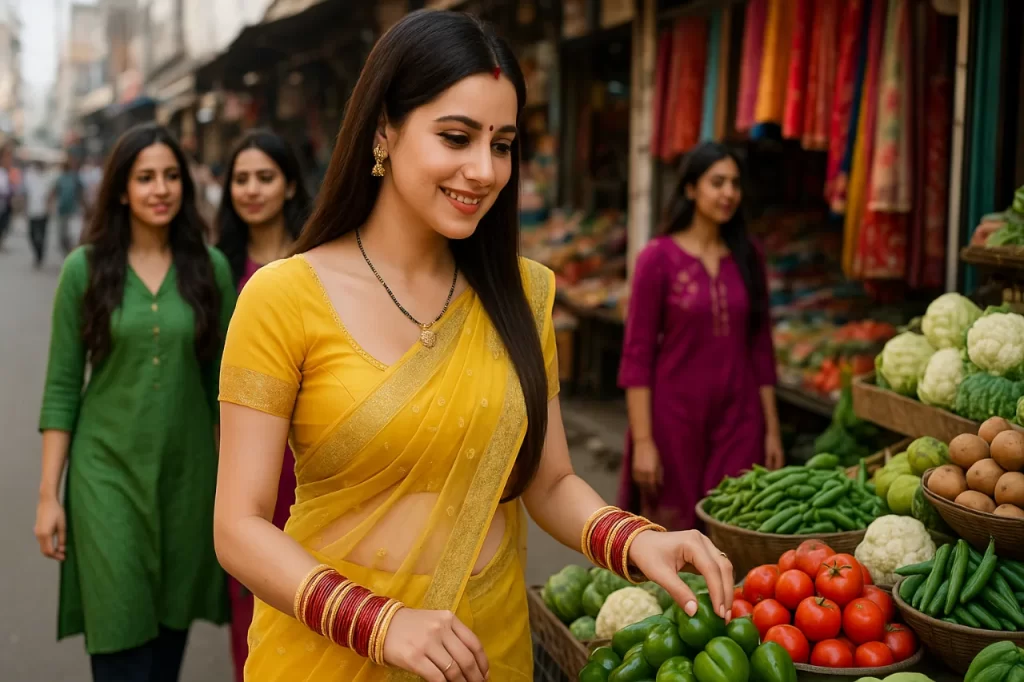
🔘 Talukas (Tehsils) in Ludhiana District
⦿ Ludhiana East
⦿ Ludhiana West
⦿ Jagraon
⦿ Khanna
⦿ Payal
🔘 Industrial Development and Key Industries
⦿ Textiles: Vardhman Group and Trident Group dominate exports.
⦿ Bicycles: Hero Cycles produces 50% of India’s bicycles.
⦿ Automotive Parts: Supplies components to Mercedes and BMW.
🔘 Local Interviews & Historical Timelines
➨ Factory Owner’s Insight: “My grandfather started with one sewing machine; now we export to Germany!” – Harpreet, Ludhiana-based industrialist.
➨ Historical Timeline:
⦿ 1480: Founded by Lodhi dynasty.
⦿ 1809: British annexation under Treaty of Amritsar.
⦿ 2013: Lodhi Fort declared protected.
This guide synthesises Ludhiana’s multifaceted identity, from its industrial grit to cultural heritage. For extended details, refer to cited sources.
➤ FAQs
Is Ludhiana safe for tourists?
Yes, but avoid isolated areas at night.
What’s Ludhiana’s signature dish?
Makki di Roti with Sarson da Saag.
How far is Chandigarh?
100 km (~2 hours by road).
➤ Conclusion: Ludhiana Unfiltered
Ludhiana is a city of contrasts—where factory hums harmonize with temple bells, and history whispers amid bustling markets. Whether you’re tracing the Lodhi Dynasty’s footsteps or haggling for hosiery, this Punjabi gem leaves no visitor untouched.
Ludhiana’s attractions cater to history buffs, spiritual seekers, and thrill-seekers alike. From the echoes of the Lodhi dynasty at Purana Qila to the adrenaline rush at Hardy’s World, the city offers a dynamic tapestry of experiences. Pair visits with local delicacies like Makki di Roti and Lassi for an authentic Punjabi immersion.
➤ Sources:
➸ Wikipedia
➸ District Administration Portal
➸ Census Data
Image Credit
➸ Wikimedia Commons – LDH PF4
➸ Wikimedia Commons – Dukhniwaran Sahib
➸ Wikimedia Commons – Clock tower Ludhiana
➸ Wikimedia Commons – Ludhiana in Punjab (India).svg
➸ Wikimedia Commons – Shree Durga Mata Mandir Ludhiana
➸ Wikimedia Commons – Gurudwara Sahib Phase -1 Urban Estate Dugri Road Ludhiana
For more information, you can visit our website: ExploreXP
“Pack your bags and dive into Ludhiana’s vibrant tapestry—book your journey now!”
Latest Posts
- Explore Gadchiroli, Maharashtra: History, Architecture, Culture, Itineraries and Nature

- Exploring Mughalsarai: History, Culture, and Travel
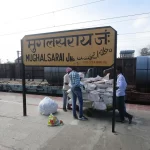
- Explore Katni, Madhya Pradesh: History, Culture, and Nature

- Ludhiana, Punjab, India – The Industrial Heartbeat with Timeless Heritage

- Unveiling Osmanabad (Dharashiv): Maharashtra’s Hidden Gem of History, Caves & Culture
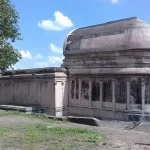
- Explore Sawantwadi: Maharashtra’s Hidden Gem of Heritage, Art, and Natural Splendour

